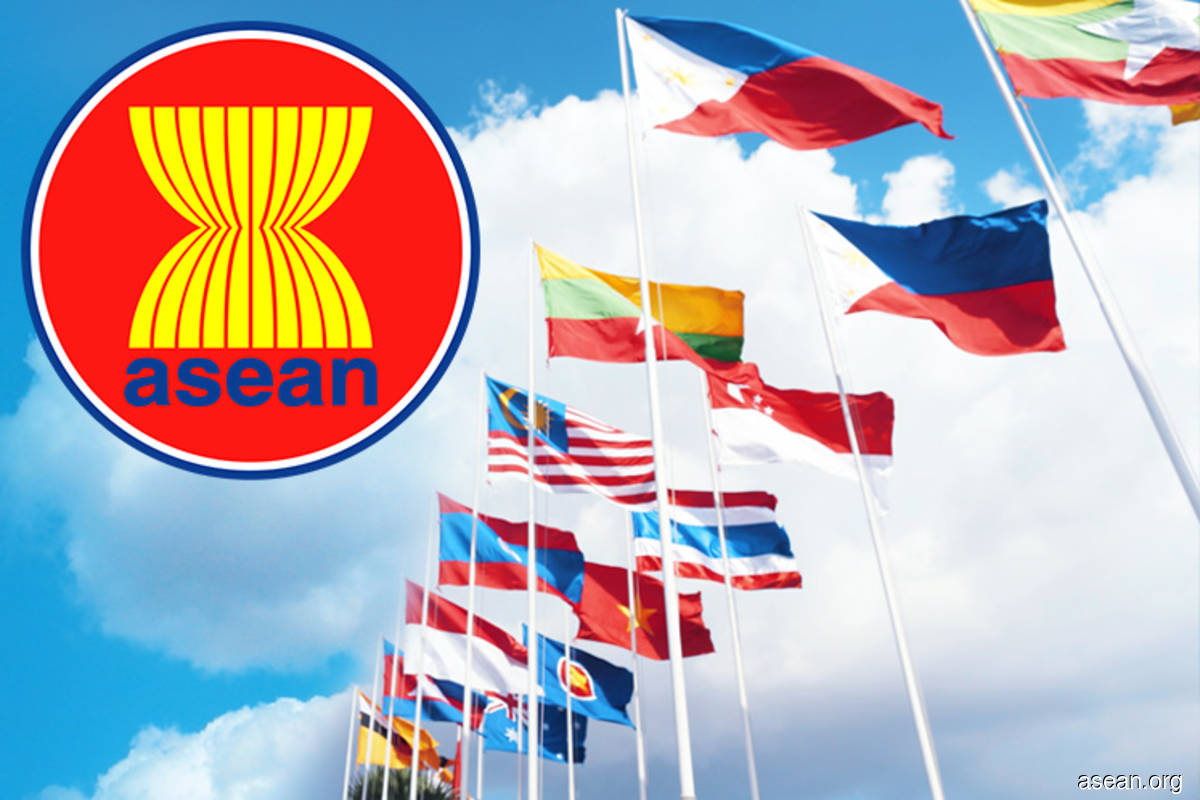Maybank sees Asean emerging as 'defensive harbour', partially decoupling from possible US recession
 Asean is emerging as a “defensive harbour” and partially decoupling from the United States’ (US) economic downturn and possible recession, according to Maybank Securities Singapore.
Asean is emerging as a “defensive harbour” and partially decoupling from the United States’ (US) economic downturn and possible recession, according to Maybank Securities Singapore.
据新加坡马银行证券称,东盟正在成为一个“防御性海港”,并在一定程度上与美国经济下滑和可能的衰退脱钩。
“We expect the Asean-5’s (excluding Singapore) growth to remain resilient and expand by 5.3% in the second half of 2022 (2H22), versus 5.4% in 1H22 and 4.9% in 2023, despite the slowing US and global growth,” the brokerage said in its research paper on August 29th.
“尽管美国和全球增长放缓,但我们预计东盟五国(不包括新加坡)的增长将保持弹性并在 2022 年下半年(2H22)增长 5.3%,而 1H22 和 2023 年分别增长 5.4% 和 4.9%,”经纪人在8月29日在其研究论文中表示。
The Asean-5 refers to Malaysia, Indonesia, Philippines, Thailand and Vietnam.
东盟五国是指马来西亚、印度尼西亚、菲律宾、泰国和越南。
Four analysts from the research house, led by Chua Hak Bin, have released an economic research paper titled “Asean Economics: Decoupling from US Recession”.
以Chua Hak Bin为首的研究机构的四位分析师发表了一篇题为“东盟经济学:与美国衰退脱钩”的经济研究论文。
The analysts said the region’s economic reopening will continue to boost growth, especially in consumer and tourism-related services that have yet to return to pre-pandemic levels.
分析师表示,该地区的经济重新开放将继续推动增长,特别是在尚未恢复到大流行前水平的消费和旅游相关服务方面。
“Strengthening intra-Asean travel and trade will partly offset weakening external demand from the US and Europe,” they said.
“加强东盟内部的旅行和贸易将部分抵消美国和欧洲疲软的外部需求,”他们说。
On foreign direct investment (FDI), the analysts said FDI to Asean is rising, as manufacturing supply chains reconfigure and shift to Asean, as reflected in the surging applications in Indonesia, Malaysia and Vietnam.
在外国直接投资(FDI)方面,分析师表示,随着制造业供应链重新配置并转向东盟,对东盟的外国直接投资正在上升,这反映在印度尼西亚、马来西亚和越南的申请激增。
The US-China trade war, the pandemic, and China’s zero Covid strategy and rolling lockdowns are reinforcing the case for diversification and “China+1” supply chains.
美中贸易战、大流行、中国的零新冠战略和滚动封锁正在加强多元化和“中国+1”供应链的理由。
Elevated energy and food prices in Thailand, Malaysia, and Indonesia are supporting some Asean commodity exports, they said.
他们说,泰国、马来西亚和印度尼西亚的能源和食品价格上涨正在支持一些东盟商品出口。
Asean growth has been more resilient than the US, European Union (EU), and China in the first half of the year, the research house noted.
该研究机构指出,今年上半年,东盟的增长比美国、欧盟 (EU) 和中国更具弹性。
The Asean-5’s (excluding Singapore) gross domestic product (GDP) growth picked up to 5.4% in 1H22, against 2.9% in 2H21, higher than the US (2.6%) and EU (4.7%).
东盟五国(不包括新加坡)的国内生产总值(GDP)在 1H22 增长至 5.4%,而 2H21 为 2.9%,高于美国(2.6%)和欧盟(4.7%)。
Asean-5 GDP growth overtook and was more than double China’s GDP growth, which slowed to 2.6% versus 4.5% in 2H21.
东盟五国的 GDP 增长超过了中国 GDP 增长的两倍多,中国的 GDP 增长从 2H21 的 4.5% 放缓至 2.6%。
“The Asean-China growth divergence will likely continue in the second half, given the divergent ‘living with’ versus ‘dynamic zero’ Covid strategies,” said the analysts.
分析师表示:“鉴于‘共存’与‘动态零’Covid战略的不同,东盟与中国的增长差异可能会在下半年继续存在。”
Asean’s equities and currencies have also outperformed other advanced and emerging markets so far this year.
今年迄今为止,东盟的股票和货币的表现也优于其他发达和新兴市场。
Equities in Indonesia (8.0% year-to-date) and Singapore (4.4%) have outperformed, it said.
它表示,印度尼西亚(年初至今为 8.0%)和新加坡(4.4%)的股票表现优于大盘。
The stock market declines in Malaysia (5.1%), Philippines (5.9%) and Thailand (2.5%) have been milder than the sharp corrections in Hong Kong (16%), China (15%), the EU (15.7%) and the US (10.7%).
马来西亚 (5.1%)、菲律宾 (5.9%) 和泰国 (2.5%) 的股市跌幅低于香港 (16%)、中国 (15%)、欧盟 (15.7%) 和美国(10.7%)。
While the US dollar has strengthened against all major and regional currencies, the depreciation has been milder in the Vietnamese dong (1.2%), Singapore dollar (3.2%), and Indonesian rupiah (4.7%), compared to other major currencies, including the Japanese yen (19.4%), euro (14.3%), renminbi (7.5%), and Indian rupee (7.4%).
虽然美元兑所有主要和区域货币均走强,但与其他主要货币(包括日元(19.4%)、欧元(14.3%)、人民币(7.5%)和印度卢比(7.4%)。
